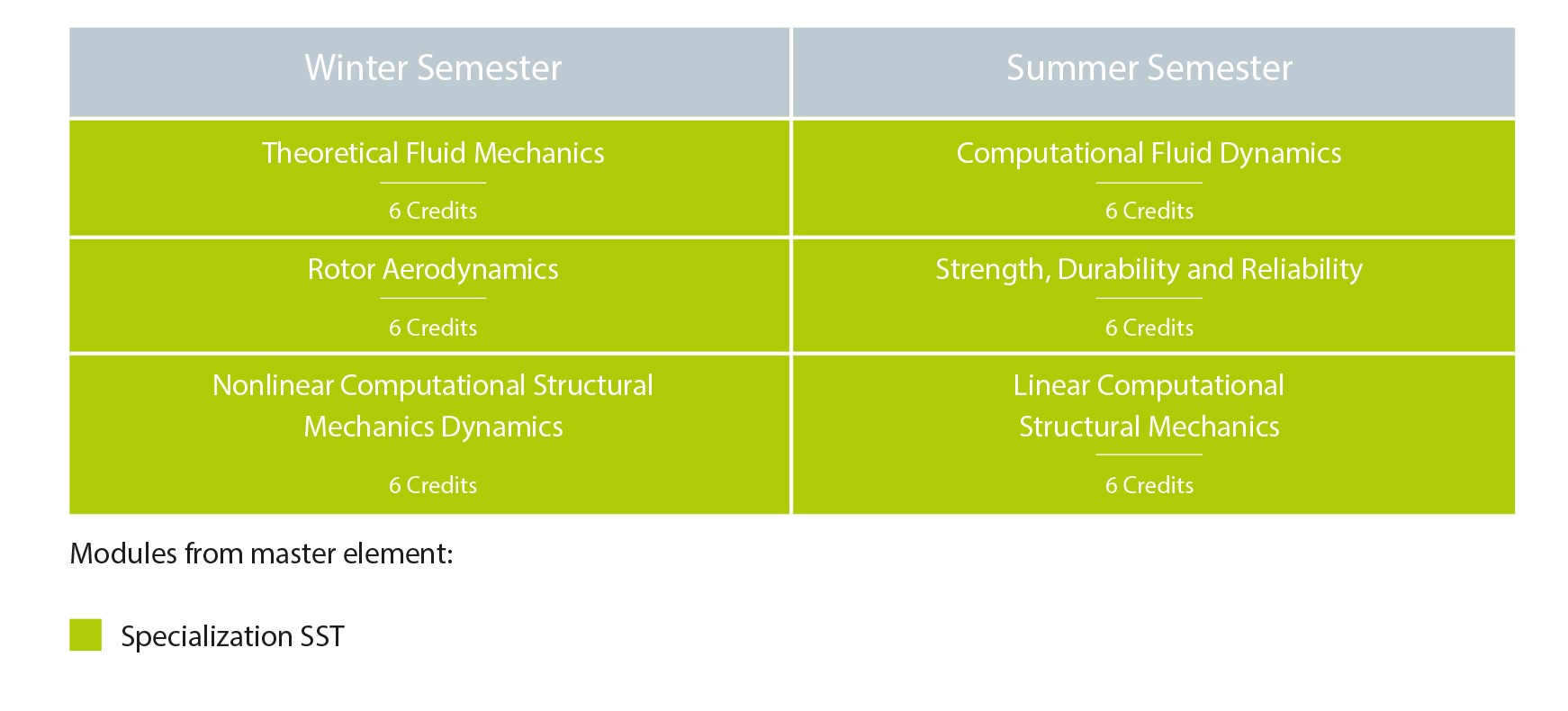Computational Wind Energy Systems
Profile
Studying the diploma course 'Computational Wind Energy Systems' requires the successful completion of the diploma course 'Scientifically Oriented Fundamentals of Wind Energy Systems`.
The diploma course in 'Computational Wind Energy Systems' provides knowledge about computational methods used for the static and dynamic analysis of wind energy converters and the surrounding wind and water flows. The goal is to enable engineers to apply existing commercial software packages of structural and fluid mechanics in a sophisticated manner as a basis for reliable prognoses of the mechanical behavior of wind turbines, to improve the quality of numerical methods, and to develop more realistic models of wind energy systems. These aspects are fundamental ingredients for optimizing current wind turbines and producing innovative new designs with a higher energy efficiency, life-time, degree of capacity utilization and robustness with regard to extreme load cases.

Overview
Type of program | Part-time online diploma course |
|---|---|
Final degree | Diploma of Advanced Studies (DAS) |
Language | English |
Standard period of study | 2 semesters |
Total credits | 30 |
Program start | Every semester |
Tuition fees | EUR 6.000,- |
It is also possible to only participate in selective courses. A course with 6 Credit Points costs EUR 1.200,-; a course with 3 Credit Points EUR 600,-. For individual books please contact the management team.
Qualification
Students of this diploma course will learn about classical, current and future numerical methods for the solution of advanced mechanical models of wind turbines and the surrounding fluid flow. They will know the advantages and disadvantages of models and numerical methods and they will recognize which combinations of models and numerical methods can be efficiently and trustworthily applied for special kinds of structural and fluid analyses. Furthermore, the students will be familiar with the limitations of the models and numerical methods and they will overcome these limitations by writing their own partial programs for special tasks in their professional career.
Based on their ability to perform realistic simulations of structural and fluid flow behavior, they will be engineers in charge of the development and design of current wind energy converters, structural safety, new developments of detailed aspects, and general novel designs of wind turbines.
Select five of the following six modules

Questions?
Contact us at wes[at]uni-kassel[dot]de.

Diploma Course Director